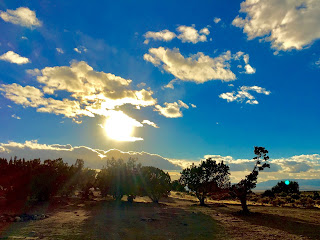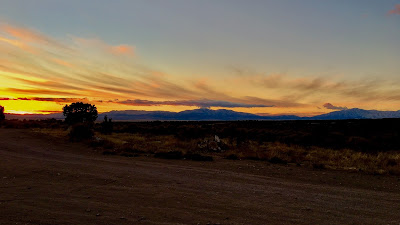First they ask, "What is that?" Then when I tell them, they ask, "Oh, do you fly?" Then I have to tell them that I'm a wimp and that pretty much what I do is talk to the airplanes... well, the pilots anyway.
I don't mind too much. It really isn't that I don't like to fly - it's just that I get motion sick really easily. I always have. So, I just pretty much stay on the ground and keep track of the airplanes in the air.
Thursday was one of those days.
The Utah Wing of the Civil Air Patrol (CAP) planned a joint exercise with the Utah Air National Guard (ANG) last Thursday afternoon, November 17. It was to take place on the border of Utah and Tooele counties, out in the desert.
A few days prior, it was debatable whether the exercise would actually take place due to a winter storm coming in late Wednesday night/early Thursday morning. Everyone involved was watching conditions so we would know whether to continue with the exercise as planned or make modifications since the aircraft wouldn't be able to fly in stormy weather.
Luckily, the storm subsided by late morning and the exercise was a "go."
 |
| Thursday's Weather |
 |
| Ground teams being briefed before search |
 |
| Utah ANG Helicopter flies overhead. |
While the search aircraft and ground teams are out doing their thing, there needs to be personnel and equipment at a location nearby that will coordinates all the efforts. This is usually referred to as the "Command Post." Depending on the size of the event, the command post can be anywhere from a single vehicle with one person giving orders, to a whole team with many responsibilities assigned to each individual. One of the main components - and this is where I come in - is communications. Sometimes, communications is in the same vehicle as most of the rest of the command group, and sometimes it is in a separate vehicle set aside strictly for communications. This is referred to as the "Comm Van."
 |
| "High Desert-88" - Utah Wing's Communications Van |
My assignment for this exercise was to keep track of the ground teams and CAP aircraft. Since our Incident command is almost always located at wing headquarters, I was in contact with them, also.
So what I did was spend several hours talking to ground and air units, kept a paper log of all communications, and entered all entries into a digital log on a computer. I also coordinated with other personnel at and near the comm van, including the radio operator assigned to the patch. I was busy the entire time spending about half the time on the radio and the other half on the logs.
 |
| Sun going down over Utah's West Desert |
 |
| ...and gone. "Fairfield Mission Base...out." |
No comments:
Post a Comment